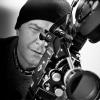Search the Community
Showing results for tags '50d'.
-
Yesterday I shot my first ever roll in my new Eclair NPR. It was a 400' roll of 50d, a short skit with some friends. It was really fun shooting with it and the camera was great to use, I'll remember this first roll. What were your first experiences with the Eclair NPR? What did you shoot? How did it go?
- 6 replies
-
- npr
- eclair npr
-
(and 3 more)
Tagged with:
-
Hello everyone. I accidentally left the Wratten (85b) filter on while I was shooting with a Vision 50D in daylight. anyone could tell me what to expect? I am sure that the color temperature will be much warmer with red/yellow/orange overcast over the image. If so, there's any chance that i can slightly correct the "problem" in post prod? i've also used the automatic exposure of the camera and my biggest fear is that the image will look too much dark and underexposed to be used. Anyone with the same experience? Thanks for the attention.
- 2 replies
-
- super8
- kodakvision50d
- (and 7 more)
-
Hello folks. I'm reading conflicting stuff about the rating of 16mm stock. Do you guys rate your stock a full stop over or 2/3 for day exterior? How about night exterior? I'll be shooting 250D and 50D mostly for now, on regular 16. I'm already compensating for the prism light loss on my Bolex Rex5 so I don't want to overexpose too much. What are your experiences? Thanks for your input!
-
Does anyone know how this camera will expose 100d and 50d? It's new to me and I can't afford a test reel right now. Thanks! - Hunter
-
The topic title says it all. Was hoping to get some opinions. I have a few reversal so I'd have to purchase the negative but I'm willing if I'd be getting much better results. Thanks! - Hunter
-
Hey, I have read in several places that slower stocks yield a more contrasty look. Does anybody have any experience with this? Would Kodak 50D be noticeably more contrasty than, say, 250D? I am shooting a scene during an overcast day and am thinking that using 50D over 250D would give the image more contrast, as I am worried that the light may look too flat on the actor's faces. Alternatively, might it be better to go with a less contrasty stock and reserve option to add contrast in the grade?
-
Hey, I have read in several places that slower stocks yield a more contrasty look. Does anybody have any experience with this? Would Kodak 50D be noticeably more contrasty than, say, 250D? I am shooting a scene during an overcast day and am thinking that using 50D over 250D would give the image more contrast, as I am worried that the light may look too flat on the actor's faces. Alternatively, might it be better to go with a less contrasty stock and reserve option to add contrast in the grade?
-
Hi everyone, I'm shooting a short soon and due to budget reasons have a selection of stocks that have to be used. I was wondering if anyone had experience of a pull process on 5203, 1 or 2 stops. We're going for a pastel, soft contrast look which i've seen great examples of on Kodaks' faster stocks but was wondering how it might come out on 5203 as it seems naturally more vivid and contrasty. The kind of look is seen in the Gordon Parks image below (something comparable in an exterior). cheers!
-
Here is another fashion shot with 50d Vision 3. The telecine was done by Ochoypico, the camera used my Beaulieu 4008 ZM2.
-
Looks like Kodak wants us to get excited. Here's a video of the assembly line for 50D.
-
Can someone tell me how vision3 and vision2 differ? Also what would you consider the nicest daylight stock? I can't find any decent hd examples of vision3 50d, could someone please link a few?






